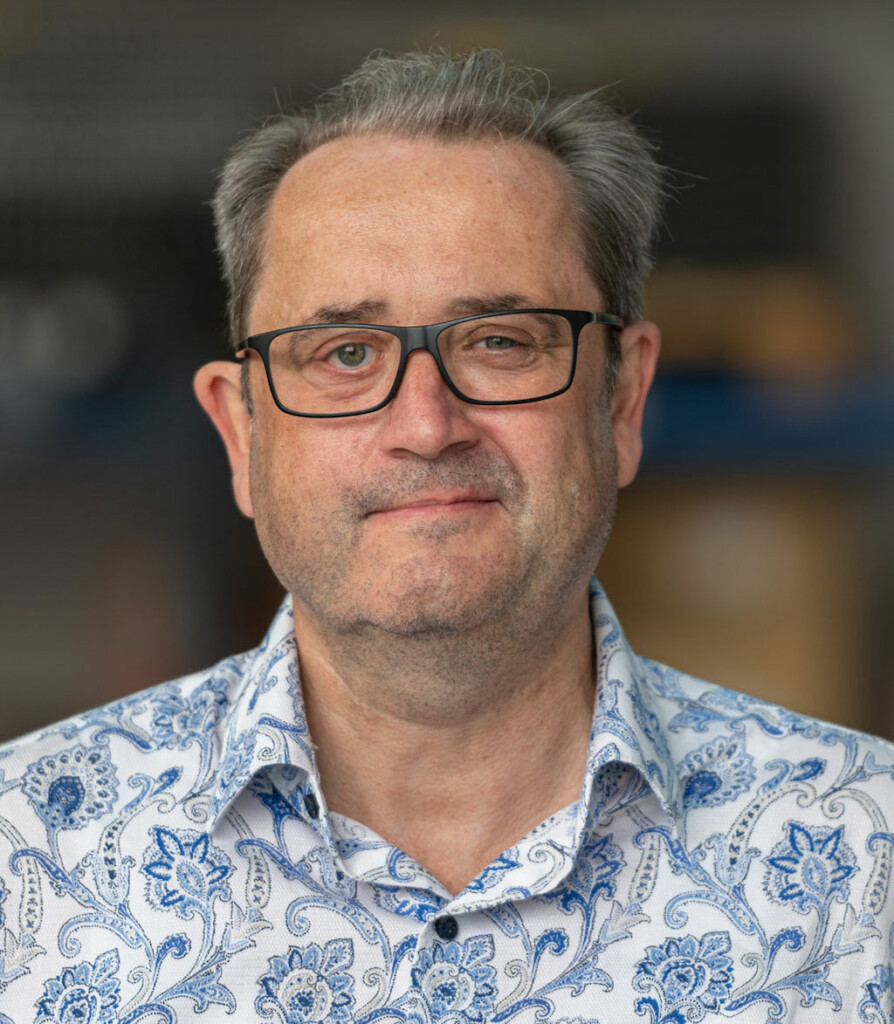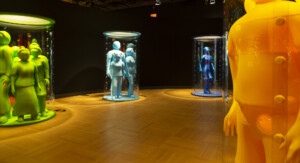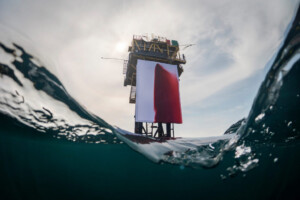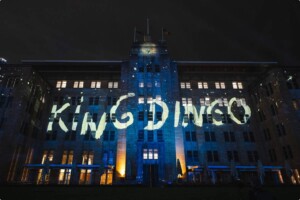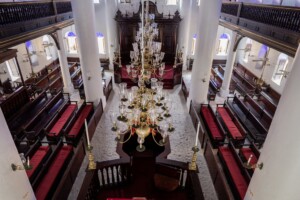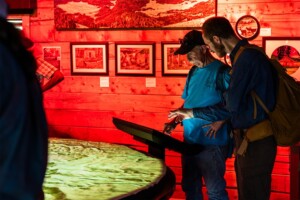AV Stumpfl designs, makes and markets a range of high-performance mobile and installation projection screens, as well as multi-display and show control systems for professional and business applications. The award-winning, Austrian family business is constantly creating new solutions to meet the demands of its clients in themed entertainment, live shows and AV installations worldwide.
One of these solutions is PIXERA, a multi-award-winning 64-bit media server system for professional real-time media processing, compositing and management, built with usability in mind. Users can seamlessly move from being a novice to a specialist by gradually discovering PIXERA’s full range of features and options.
As the firm prepares to launch PIXERA 2.0, we speak to Helmut Protte, AV Stumpfl’s global business development manager, about the new release’s capabilities and improved features, and how the server system acts as a one-stop shop to power the themed entertainment experiences of the future.
The advantages of being a family-run business
AV Stumpfl was founded over 45 years ago, initially for the manufacture of screens. 20 years later, the company also started making show control parts and has since become a leader in this market.
“We are a family-owned company based in Austria which has now been taken on by the next generation,” says Protte. “That makes us unique in this world. We have a flexible, small structure, and we can make fast decisions and react quickly to trends.
“All our software and hardware development happen in-house. So, when it comes to new trends, new developments, and new requests from customers, our developers can quickly test new features to follow up on these demands.”
Changing guest expectations
When it comes to how show control in the themed entertainment industry has evolved over the last two decades, Protte says that these changes have come about because of changing demands from both the audiences and the operators.
“If we look at the way the audience has changed, younger visitors expect much more technology. This generation is demanding more interactivity and more gamification. They want things to be integrated and immersive, they want more action. That trend is only going to grow. Today’s kids are growing up with all this cutting-edge technology in their own private lives.”
“People used to be happy with rides where there was the same experience each time. But I think we will see more personalisation, more realistic, immersive experiences going forward.
“Of course, there is a discussion around when the technology stops and the storytelling starts. Storytelling is the most important part of the experience. If you have a bad story or bad content, the technology can’t hide that. So, the creative people who design all these experiences are still key.”
Simplifying operations with PIXERA
Moving on to look at how the operators’ demands have evolved, Protte says that, in some ways, this has gone in the opposite direction, necessitating something of a balancing act. With the technology used to create experiences getting more and more complex, what operators want is a simpler way to control everything.
“The shows get so complex, with multimedia, audio, sensory elements, automation, lighting, etc. What operators are requesting from us is easy access to these complex installations, and the ability to collaborate between different technologies. That means we, as a manufacturer, must be open to other manufacturers in how we collaborate faster on the technology side, to create easier connections between different technology devices.
“While it is experts who build the shows, we need to nail it down to operate it simply with a one-touch button. This is what the end client wants for daily operations. So, we have this high-end technology, but we need this one solution to operate it. The user interface must be accessible for the day-to-day technicians and the ride operators.”
Trends to watch
Speaking about current technology trends in the themed entertainment industry, Protte identifies generative AI as a key area to watch.
“We’re seeing everything is more interactive, so the content is constantly changing, and the storytelling has to be very flexible. Influenced by video gaming, we’re seeing more real-time content generation coming into the themed entertainment industry, integrated with existing effects like audio, lights, sensors, movement, automation, robotics, etc.”
“Because of this need for more real-time, more speed, and more flexibility, it is also more complicated in terms of show control, for the experience to react and change in real-time based on the guests’ movement or feedback. But it gives a more realistic and immersive feel.
“This generative real-time content also opens the door to gamification, which is another huge trend.
“There are also still discussions around how the metaverse and like real world are going to merge. How do we get a metaverse experience in a real theme park environment? I think this is where we will see how far AI and robotics are going to evolve. I would say that we will see more robotics going into theme parks, and more animatronic elements on a much higher level. And that generative AI content will drive more interaction between robotics and humans.”
Whatever the trends are, the AV Stumpfl team is poised to meet them, he adds.
PIXERA
AV Stumplf’s key product is PIXERA. As the firm prepares to launch the latest iteration, PIXERA 2.0, Protte explains PIXERA’s capabilities:
“PIXERA is a real-time video compositing system. It allows you to move any pixel, anywhere in the world, in 3D space, up to any kind of size and up to high-end resolutions. And then the show control is an extra part where we bring show control and video and audio demands together in real-time.”
“We think of our show control capabilities as a Swiss Army knife. The show control system gives you any kind of external or internal commands, it brings everything together and allows you to do different commands from one sole point of control.
“As we spoke about before, operators demand an easy, customisable, global usage system. We have a one-stop solution, a base where we can give any show control capabilities to our global community, from simple show control to high-end complex productions.”
Meeting operators’ needs
PIXERA can support a wide range of applications, from small creations to giant complex show controls.
“We have show control possibilities for any system, anything from a little door sensor up to multi-genre, immersive rides. For example, let’s say in a theme park ride you have the pre-show, where you need some interactivity and you need show control to do things like open doors, and then you have an immersive dark ride that also needs show control. Our system as a one-stop solution allows you to control the rides, the shows, the rollercoasters – whatever is needed in your theme park.”
It’s a de-centralised system:
“This means that when you have show control here for the queuing lines or here for the rollercoaster, you can match them all together and give commands ABC back and forth.
“Our show control, combined with all the other multimedia applications we provide with PIXERA in this setup, has a full backup system possibility. So, operators have security for constant playback and constant operation.
“We also have different user management applications. For instance, the local dark ride technician can only access the show control for that ride. While the head control system has different access levels, the ride operator who starts the show just has to push one button.”
PIXERA is also an open API platform:
“This means that our Application Programming Interface is open, we allow third-party solutions to communicate with PIXERA. It always allows you to drag and drop modules in the show control and combine with other systems.”
PIXERA in action
Giving some examples of how PIXERA can benefit themed entertainment applications, Protte says:
“PIXERA can be used for immersive visuals, for ride control, for queue lines, for ride visuals, and more. The reception from the clients is that we are easily accessible. That is one of our core benefits, that we are a master control one-stop solution. Our customers choose PIXERA for applications in dark rides, immersive experiences, museum installations, and really anything to do with themed, location-based entertainment.
“As the complexity of technology in this sector is growing so much, we try to help the operator to make sense of it and to be able to solve problems. We have some new installations, for example, one in a new museum and experience centre for a corporate manufacturer, they chose PIXERA as a main core show control and video player for the whole experience centre because exactly of this point.”
The collaborative technology integration with third-party technologies is also a key reason why operators choose PIXERA:
“One example is the ISAAC platform, which is a customer management system created by Smart Monkeys. This is also directly accessible through our third-party system integration.
“We give our customers a one-stop solution where they can access the modules they need and then from the programming and operating side they benefit from the easy handling of PIXERA. With the API freedom in our system, we allow our customers to fully compose and control their content and put it into our system.
“Also, that open flexibility allows us to move with any trend in the future. Whatever comes, we will be prepared.”
PIXERA 2.0
PIXERA 2.0 will be released in Q4. One of the key new features is that it will allow for multiple users, as Protte explains:
“PIXERA 2.0 will allow several technical people to work on one project, programming on different sections. So, if you have a very complex system where one person cannot program everything, this will allow somebody to work on one show control while someone else does the video compositing, and another person works on the programming of the video mapping, for instance. The multi-user service allows you all individually to work fast on one project and then merge it easily together.”
The multi-user function is also compatible with PIXERA’s automatic back-up:
“We have a high demand for automatic back-ups, so we also have an automatic back-up scenario for this multi-user element. It checks internally which systems are running. If one has a problem or if a system fails, the other one automatically takes over. When you’re working with live experiences, there is a high demand for this capability.
“PIXERA 2.0 also has more flexible content management and content mapping. When working with projection mapping and some immersive rooms, it can work with a surface of any size and any 3D mapping.
“It’s more flexible, faster and more helpful.”
Real-time content creation
Essentially, PIXERA 2.0 was developed by listening to real user demands
“Whenever our users said, ‘It would be nice to have ABC’, we listened to them, and this is the result. When it comes to combining complex shows we implemented also dry client programming. That means I can sit at home and program my whole system virtually at my desk. Let’s say I have a visual project. I can program it in PIXERA so that I can pre-program a lot of shows in virtual pre-production.
“Another interesting aspect is that we are working with real-time content creation like Unreal Engine, the video game engine; we have a direct integration built-in with our plugin, so our customers will be able to generate the new Unreal 5.2 content in and run it over PIXERA 2.0.”
The themed entertainment experiences of the future
Looking ahead, Protte says we will see more of this open, third-party integration powering the themed entertainment experiences of the future.
“That third-party integration allows for faster combination and easier collaboration between different products. There is a real demand for generating real-time content coming from game engines like Unreal or effects engines like Notch, combining systems to give the audience more experiences.”
“Our goal is to have one unique platform that allows users to interact with several technologies. That means they are prepared to follow up the new trends, whatever comes next. Right now, everybody’s talking about AI, Unreal Engine, and video gamification. But we don’t know what’s next, we don’t know what will be happening in three years. That is why we created a very open platform, to be prepared for what’s next.
“We are also working to expand our global sales network. We partner with technology experts, like Electrosonic, Kraftwerk or Smart Monkeys for example, who are trained global partners in integration for theme park applications.”
What’s next for AV Stumpfl?
The team will be attending IAAPA Expo Europe from 25 – 28 September 2023. This year, the event will be on AV Stumpfl’s doorstep in Vienna, Austria:
“We will be supporting our partners at IAAPA Expo in Vienna. So, our products will be in use at a number of booths, helping to deliver their vision. We will have a team of four attending the show, and we are also supporting the TEA member’s mixer.
“Looking ahead, we are going to open an office on the West Coast in Los Angeles, to be closer also to the theme park industry on the West Coast, in addition to our US headquarters in Atlanta.
“Our programmers are always busy creating, in response to new demands, so there will be plenty of new developments on the horizon too.”
To arrange a meeting with the AV Stumpfl team at IAAPA Expo Europe, you can email Helmut Protte here.


